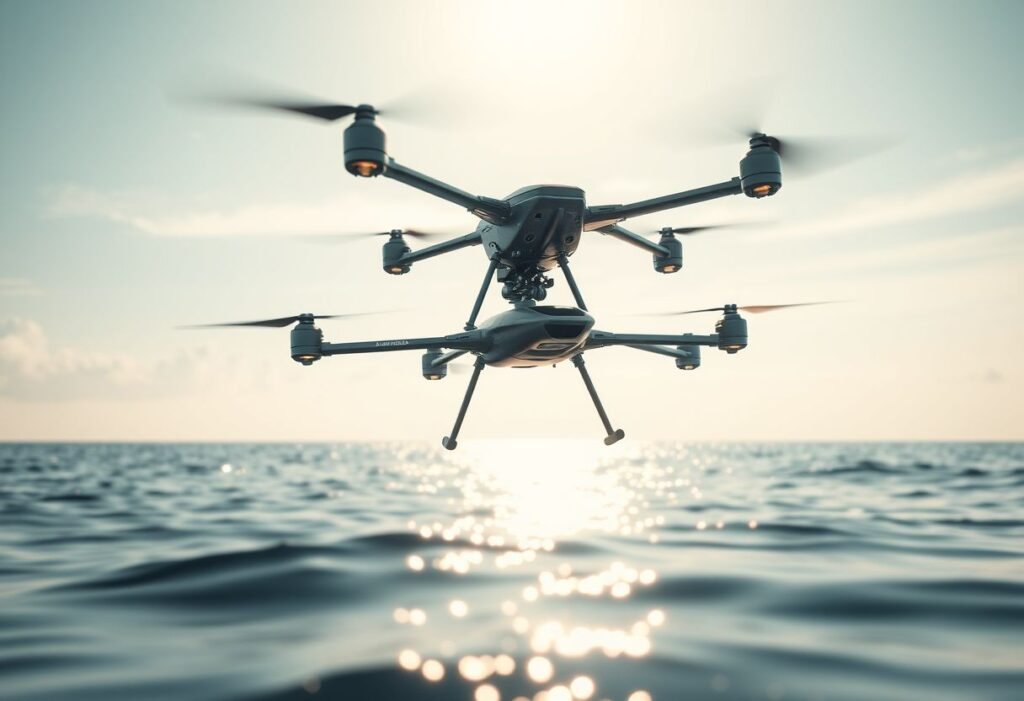In the realm of advanced technology, the introduction of amphibious vehicles marks a significant milestone. The Nezha-SeaDart, developed by researchers at Shanghai Jiao Tong University, brings forth an innovative design that allows for seamless transitions between flying, hovering, and diving, thereby enhancing capabilities in various environments.
Innovative Design of the Nezha-SeaDart
The Nezha-SeaDart represents a remarkable fusion of aquatic and aerial capabilities. This high-speed drone is engineered to hover like a conventional drone, enabling it to conduct aerial surveillance and data collection efficiently. Its wings allow it to transition smoothly into flight, offering capabilities similar to traditional aircraft. However, the true uniqueness of the Nezha-SeaDart lies in its ability to dive rapidly underwater, allowing it to perform tasks that are advantageous for marine exploration and monitoring. This combination of features sets it apart from other drones, particularly in terms of versatility and operational scope.
Applications in Various Domains
The versatile nature of the Nezha-SeaDart opens doors to numerous applications. In the field of marine research, its ability to explore both above and below the water surface can enhance our understanding of aquatic ecosystems. Environmental monitoring is another critical application where the Nezha-SeaDart can play a vital role, providing real-time data about water quality and climate impact. Furthermore, its design could be instrumental in rescue operations as it can access hard-to-reach areas both aerially and underwater, potentially revolutionizing emergency response techniques.
The Technology Behind the Nezha-SeaDart
At the core of the Nezha-SeaDart’s performance are advanced materials and propulsion systems that ensure efficiency and high-speed maneuverability. The use of lightweight materials not only optimizes energy consumption but also enhances speed and agility during transitions between flying and diving. Innovative propulsion methods allow swift changes in velocity, which is crucial for quick responses in dynamic environments. These technological advancements contribute to the overall effectiveness of the Nezha-SeaDart, making it a front-runner in the next generation of hybrid vehicles.
Benefits of Amphibious Technology
The development of amphibious technology like that found in the Nezha-SeaDart offers numerous advantages over traditional vehicles. The capability to operate in multiple environments reduces the need for specialized vehicles, optimizing resources and operational costs. This multipurpose functionality not only benefits research teams and emergency responders but also has potential applications in sectors such as tourism and entertainment, where exploratory adventures can be enhanced with such versatile vehicles.
Future Potential and Developments
Looking ahead, the Nezha-SeaDart embodies the potential for further innovations in amphibious technologies. As researchers continue to refine its capabilities, we can expect to see advancements in its range, battery life, and payload capacity. The implications of these developments are vast, extending to commercial uses, conservation efforts, and enhanced recreational activities. Furthermore, as environmental concerns grow, technologies like the Nezha-SeaDart will play an instrumental role in sustainable practices by enabling more effective environmental monitoring and exploration.
Conclusion and Implications for Innovation
In conclusion, the Nezha-SeaDart is not merely a technological marvel; it signifies a step forward in the integration of aerial and aquatic capabilities. As this innovative vehicle demonstrates, the fusion of diverse functionalities can lead to groundbreaking advancements in various fields. Its multifaceted applications and forward-thinking design are poised to inspire further exploration within the realm of hybrid vehicles. The Nezha-SeaDart not only reflects the innovative spirit of modern technology but also encapsulates the potential to meet emerging challenges and demands across industries.
Disclaimer: This article is for informational purposes only and is not intended to provide specific advice or recommendations regarding technology.





















